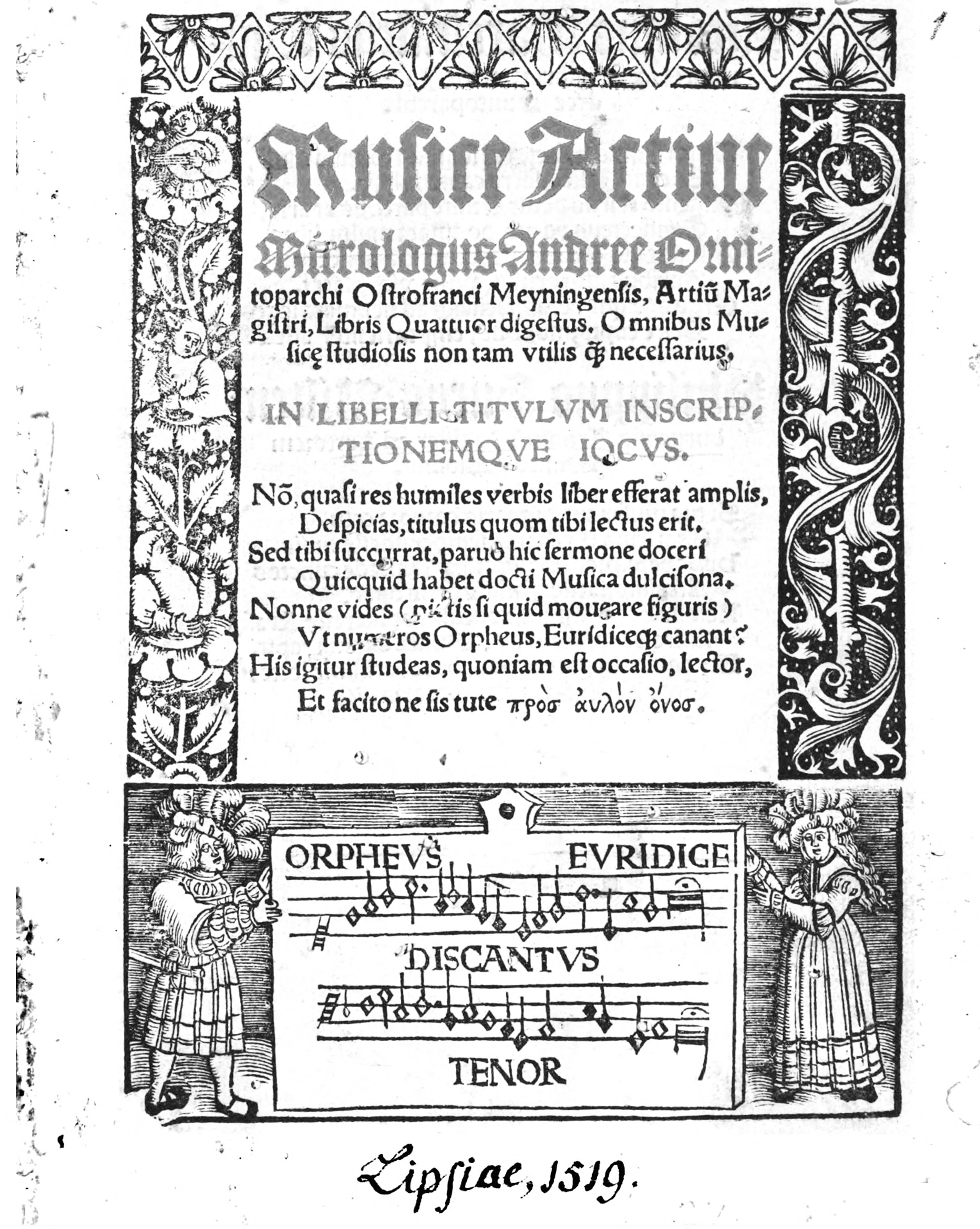Verzeichnis deutscher Musikdrucke des 16. Jahrhunderts
Catalogue of sixteenth-century German printed music
Leipzig: Valentin Schumann, 1519, vdm: 505
Musice Actiue || Micrologus Andree Orni⸗||toparchi Ostrofranci Meyningensis, Artiũ Ma⸗||gistri, Libris Quattuor digestus. Omnibus Mu⸗||sicę studiosis non tam vtilis q̃𝔷 necessarius.|| IN LIBELLI TITVLVM INSCRIP=||TIONEMQVE IOCVS.|| Nō, quasi res humiles verbis liber efferat amplis,|| Despicias, titulus quom tibi lectus erit.|| Sed tibi succurrat, paruo hic sermone doceri || Quicquid habet docti Musica dulcisona.|| Nonne vides (pictis si quid moueare figuris) || Vt numeros Orpheus, Euridiceq𝔷 canant?|| His igitur studeas, quoniam est occasio, lector,|| Et facito ne sis tute πρὸσ ἀυτὸν ὄνοσ.
Excussum est hoc opus: denuo castigatum: regoguitumq̃𝔷: || Lipsie in edibus Valentini Schumanni: calcographi solertissi=||mi: Mense Aprili Anni virginei partus vndeuigesimi supra || sesquimillesimum.||
A frame with the large initials V[alentin] S[chumann] and a branch of a tree growing out of the V (with oak leaves?). Around the initials the letters M V L D, all surrounded by two further tree branches and two flowers.
Leipzig
Theory book
Further editions after 1550: Leipzig 1555, London 1609.
1v: Nicolaus Marescalcus Churius ... in Musicen Andree Ornitoparchi.
1v: Philippus Surus Miltenburgenis ... ad Lecotrem Musice studiosum.
2r: preface by Ornitoparchus.
M3v: Tetrastichon authoris ad Libum.; Libellus ad Lectorem.
M4r: Tetrastichon Auctoris in Inuidum.
Frame of title made of four woodblocks. The largest, at the bottom, shows Orpheus and Euridice holding a sign with music for two voices (Discantus and Tenor) in mensural notation. Various illustrative woodcuts including one showing the hexachords (with organ pipes) (A6v) and one showing the mutations (B3v). Diagram of monochord on C4r.
Latin; Greek
